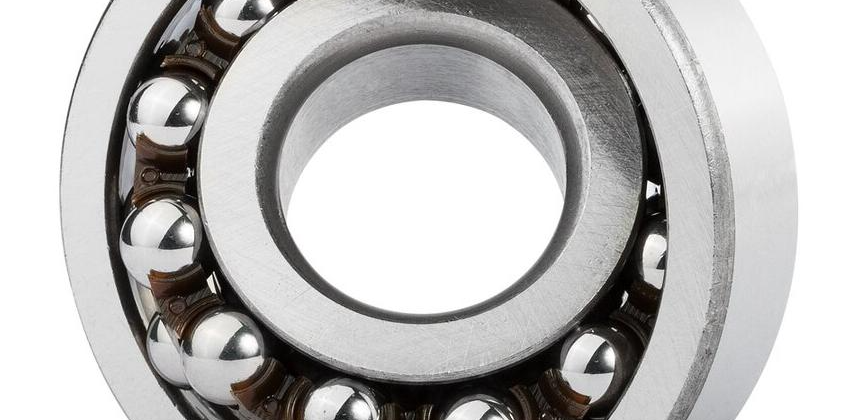A ball bearing is a type of rolling-element bearing that uses balls to maintain the separation between the bearing races. The inner and outer races are made of racetrack-shaped grooves. The balls, also called “rolling elements”, are placed in the grooves so they can roll with very little friction.
The answers to these questions depend on several factors, such as:
Depends on the type of ball bearing.
The weight a ball bearing can hold depends on the type of ball bearing.
Ball bearings are made up of a steel casing and a rotating steel ball that rolls in a race (a groove or channel) in the casing. The balls are held in place by a retainer that is pressed into the casing. The retainer can be made of carbon, bronze, or other materials, depending on the application. The case is made up of two halves that are held together by either a snap ring or an outer race with detent bumps.
There are two main types of ball bearings: single row and double row. Single-row bearings use one row of balls and races to support loads in one direction only. Double-row bearings use two rows of balls and races to support loads in both directions.
Depends on the space inside the ball bearing.
The weight of a ball bearing depends on the space inside the ball bearing. The greater the inner diameter of the ball bearing, the more weight it can hold.
A small ball bearing has a smaller inner diameter than a large one. A larger inner diameter means there is more room for material and therefore more weight can be supported by that ball bearing.
The weight supported by a ball bearing is proportional to its outer diameter and inversely proportional to its inner diameter. So as these two dimensions increase, so does the maximum load that can be supported.
Depends on the material from which the balls are made.
Ball bearings are used in a wide variety of applications, from cars to airplanes. In many cases, the weight of the bearing is not particularly important. For example, a bicycle wheel will operate just fine with a few hundred grams of ball bearings. In other cases, however, the weight of the bearing can be very significant. For example, if you’re building a crane for moving heavy loads around your factory or warehouse, you might need to know how much weight each ball can hold before you can determine if it’s strong enough for your needs.
The best way to determine this is by looking at the material used to make the balls themselves. Ball bearings are typically made from steel, but they can also be made from bronze or plastic. Steel is stronger than bronze or plastic, so steel balls can hold more weight than bronze or plastic ones can — but there are limits on how much weight even steel balls can hold before they break apart under pressure.
The weight a ball bearing can bear depends on how it is supported.
If the load is applied evenly to all parts of the bearing’s surface, the maximum load that it can support is equal to its weight.
The load on a bearing is not always applied evenly over its entire surface. This happens when the bearing supports an axle or shaft that rotates on it. The load on one side of a bearing (the rolling side) is greater than that on the other side (the sliding side).
The difference between the two sides causes uneven loading and causes heat and wear in the bearing. A bearing can withstand more weight if there are no sliding surfaces on either side of it, or if it has grooves cut into its rolling surface so that only one part of each groove bears against the shaft as it turns.
Related to ball size.
Ball diameter is the most important factor in determining the load capacity of a ball bearing. The larger the ball diameter, the greater its load capacity.
The load capacity of a ball bearing can be increased by increasing its diameter or by increasing its number of balls (i.e., increasing its raceway width). The accuracy and precision of any bearing are also related to its raceway width. In general, if you want a high-precision bearing with high load capacity, you need to choose wide raceway bearings with large numbers of balls.
The outer ring (outer ring) is made up of two parts: an outer ring groove and an outer ring cover ring cover groove. The outer ring groove has a certain size and depth, which determines the outer ring’s seating position relative to the inner ring when they are assembled together.
Depends on the type of seal used.
Ball bearings are used in many electric motors and mechanical devices. There are two types of ball bearings: sealed and unsealed.
The sealed ball bearing is used more often than the unsealed one because it has a higher load capacity. The weight a ball bearing can bear depends on the type of seal used.
A sealed ball bearing is filled with oil or grease that lubricates the metal surfaces and keeps them from rubbing together. A rubber ring seals out dirt and moisture so that it does not get into the bearing and cause corrosion or premature wear.
Sealed ball bearings are used in electric motors because they can carry heavy loads without overheating or wearing out prematurely. These bearings are also used in washing machines, refrigerators, air conditioners, etc., where they keep dust out so that they run smoothly for years without needing repairs.
The weight of a ball bearing will vary based on its diameter and material. In general, larger ball bearings can support more weight due to their increased size and surface area. This means they can hold up more weight than smaller bearings with the same material.


